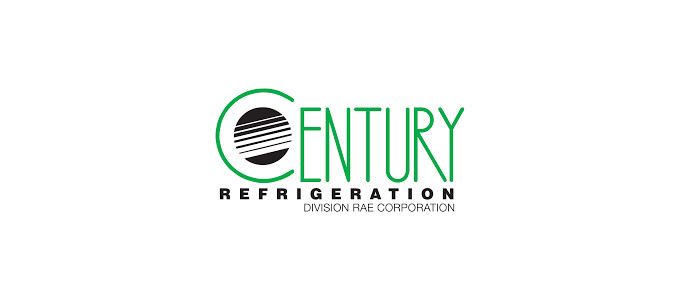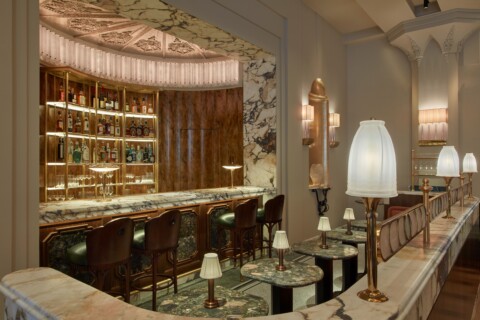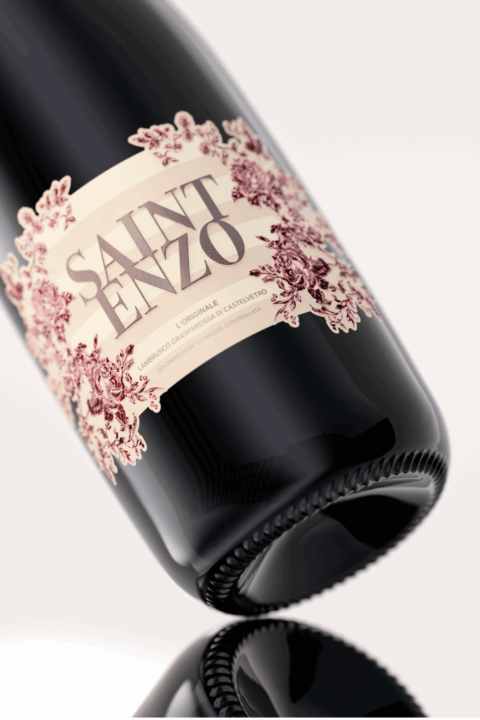Key Components of State-of-the-Art, Dedicated Wine Cooling Systems
By Kevin Trowhill, Vice President at Century Refrigeration, a division of RAE Corporation
 The temperature of wine must be kept stable throughout its production and storage in order to ensure final product quality that is acceptable for distribution and sale, and so cooling systems are an integral component of wine production. In wineries, the entire harvest can be destroyed by a temperature fluctuation during processing or storage, leading to catastrophic consequences for wineries.
The temperature of wine must be kept stable throughout its production and storage in order to ensure final product quality that is acceptable for distribution and sale, and so cooling systems are an integral component of wine production. In wineries, the entire harvest can be destroyed by a temperature fluctuation during processing or storage, leading to catastrophic consequences for wineries.
Cooling systems must meet three main criteria in order to be effective in wine production and storage applications: the cooling systems must be able to achieve the ideal temperatures for wine production processes; they must deliver consistent, reliable operation; and they must be well-designed for safe, convenient use. Mass produced commercial cooling systems cannot achieve all of these criteria. Only state-of-the-art cooling systems designed specifically for the wine industry are capable of meeting these needs and therefore protecting wineries’ harvests, year after year.
Achieving Ideal Temperatures
One of the primary factors in the design of a highly effective wine cooling system is that the system must be capable of achieving the necessary temperature for wine production. In the case of red wine production, the propylene glycol solution is used in tank cooling jackets that must remain at 35°F for the duration of the cooling process. In either case, the chiller in question must be able to supply glycol temperatures far below the range of standard mass produced commercial chillers and mechanically operate regardless of ambient temperature. A chiller’s compressor will normally operate 10°F below the desired glycol temperature in order to achieve optimum glycol temperature. Most commercial chillers’ compressors are designed to run at 35°F and produce water cooled to 45°F. Dedicated wine cooling systems’ compressors are designed to operate reliably in the 10-25°F SST range, in order to achieve the necessary glycol temperatures of 20°F and 35°F described above. Some cooling systems, such as the Century Refrigeration N-Series Chiller, are designed specifically for wine production, and therefore are able to achieve these temperatures far below the operating range of generic commercial cooling systems. Achieving the correct temperature goes hand-in-hand with the next important aspect of a successful cooling system for wine applications: reliability.
Consistent, Reliable Operation
It is not enough that cooling systems used in wineries must be able to achieve the necessary cooling temperatures: they must be able to do so consistently throughout the harvest season and through their lifetime. A number of features of cooling systems contribute to their overall reliability, including protection from catastrophic failures, design for energy efficiency, and ability to handle a wide range of operating conditions.
The systems must be built to protect themselves from catastrophic failure in order to avoid risk of damaging significant portions of a harvest. The N-Series Chillers, for example, can be easily reset in the event of certain failures, and can be built with multiple compressors or circuits, suction accumulators and replaceable core suction filters provides added redundancy and reliable system design.
The N-Series Chiller systems are also built to maximize energy efficiency throughout the system lifetime, which further improves reliability. The air-cooled coils by Century Refrigeration feature 12 fins per inch, in comparison to mass produced commercial systems’ 22-24 fins per inch. At 12 fins per inch, the coils can be washed out with water or compressed air to keep the coil clean and functioning at top capacity throughout the life of the equipment. At 22-24 fins per inch, the coil acts like a filter, trapping dirt and debris as time goes on. These coils are extremely difficult to clean, and lose capacity over their lifetime.
Workload and ambient temperatures can also strongly impact the reliability of the cooling systems’. The load being placed on a winery’s cooling system varies greatly throughout the harvest season, and so systems that are designed specifically for use in wineries must be capable of maintaining temperature regardless of the load by varying cooling as needed. These systems are also capable of operating in a far greater (30 degrees to in excess of 115 degree ambient) range of ambient temperatures than commercial-grade chillers. Since commercial chillers are designed to cool only to a lower extreme of about 45°F, they are often incapable of handling ambient temperatures anywhere below about 40°F without modification. Wine process-specific chillers, on the other hand, need to achieve glycol temperatures of 35°F year-round, and so they are capable of functioning reliably in ambient temperatures far below 40°F.
Design for End Use
The N-Series Chiller systems are also built to maximize energy efficiency throughout the system lifetime, which further improves reliability. The air-cooled coils by Century Refrigeration feature 12 fins per inch, in comparison to mass produced commercial systems’ 22-24 fins per inch. At 12 fins per inch, the coils can be washed out with water or compressed air to keep the coil clean and functioning at top capacity throughout the life of the equipment. At 22-24 fins per inch, the coil acts like a filter, trapping dirt and debris as time goes on. These coils are extremely difficult to clean, and lose capacity over their lifetime.
Workload and ambient temperatures can also strongly impact the reliability of the cooling systems’. The load being placed on a winery’s cooling system varies greatly throughout the harvest season, and so systems that are designed specifically for use in wineries must be capable of maintaining temperature regardless of the load by varying cooling as needed. These systems are also capable of operating in a far greater (30 degrees to in excess of 115 degree ambient) range of ambient temperatures than commercial-grade chillers. Since commercial chillers are designed to cool only to a lower extreme of about 45°F, they are often incapable of handling ambient temperatures anywhere below about 40°F without modification. Wine process-specific chillers, on the other hand, need to achieve glycol temperatures of 35°F year-round, and so they are capable of functioning reliably in ambient temperatures far below 40°F.








